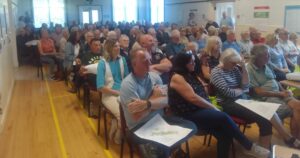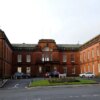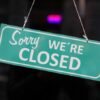Last week we left champion Galloway cattle breeder Jim Ross of Romesbeoch just after he met wife Selina, the duo having met through Lower Nithsdale Young Farmers, when he was serving as chairman and she as secretary.
Jim had been working with Galloways since he was five or six and in 1962, aged nine, he showed his first one, a heifer calf named Orange Blossom, at New Galloway Show.
At that time the Ross family was farming at Glaisters outside Corsock, which his dad Jim and grandpa Matt had bought a decade earlier.
A big flit to Romesbeoch at Shawhead came in 1967, when Jim senior decided to take up dairy farming.
That didn’t suit 15-year-old stockman Jim junior one little bit – and he informed his dad that unless he could take the best six heifers and the bull with him he wouldn’t be going.
He got his way and over the years the Romesbeoch herd was built up – but the best years were still ahead.
“Selina and I became an item in 1974,” Jim continues with his story over coffee and biscuits in the couple’s Shawhead home.
“She was Selina Deans from Barbush at Troqueer and we married in 1976, when I was 24.
“We did not really start showing Galloways until 1983, when I had this really good heifer stirk.
“The late John Jardine of Netherton, he was a Galloway stockman, said we should show her – and she was champion at Ayr that year.
“Then at the Stewartry Show in 1984 my Galloway cow Marianne of Romesbeoch was the Galloway champion.
“It was a Canadian judging, Merlin Bradley, who married Jean Austin from Boreland of Girthon.
“I was still in the dairy at that time and the work with the Galloways was done only after everything else was finished.
“That was my hobby as I was getting to the end of my young farmers years.
“But in 1985 we had our first venture to the Highland Show.
“It was a big thing at that point because it was something we had never done before.
“And Marianne of Romesbeoch finished up reserve overall Galloway champion.
“The experience of being there was breathtaking – to think that I had never shown a beast there before.
“There were big numbers of Galloway cattle – all the best herds in the country were there and it was just tremendous.
“There was friendly rivalry and everybody was helping one another.

“It was my first time there and a Galloway stockman, Eddie Blackstock, kept me on the straight and narrow and gave me tips of the trade on how to show the beast off at its best.
“Grandpa was absolutely delighted and Marianne went on to win the Highland Show after that.
“Eddie was very important as a mentor, as was Hugh Lamberton.
“He was a Scotsman who managed an estate in Oxfordshire where I used to go on holiday as a boy.
“He put Galloways on and made a good job of them – I learned a lot from him.”
A big change at Romesbeoch came in 1992, Jim recalls, when Jim senior decided to take a back seat.
“My dad was retiring and we decided to do away with the dairy at that point.
“The milking parlour there was the first to be installed in the Stewartry but milk quotas were worth a bit of money and we opted to put the cows away.
“The dairy cows went out one morning and a herd of beef suckler cows, mainly Herefords, came in the afternoon.
“We also bought another nine Galloway heifers at the Castle Douglas February sale and our Galloway herd increased.”
At this point, I ask Jim whether he felt the Galloway breed had been hurt by the export of large numbers of quality stock during the late 1980s and 1990s.
“Well,” he says. “In the seventies they were being promoted wrongly – that they lived almost on fresh air.
“There were guys coming up from England buying 10 or 15 heifers at a time and expecting them to live on green arable ground without any feed, which does not happen.
“That did the breed a lot of damage.
“I also remember the February sale in Castle Douglas before BSE.
“There were lots of Galloway cows going to Germany.
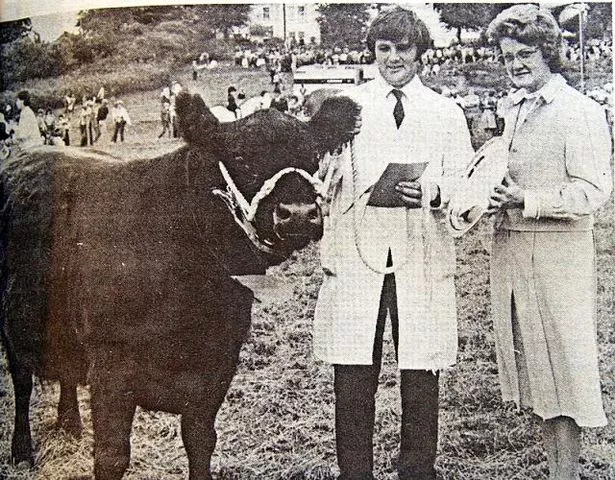
“I was interviewed by Border Television about it.
“I said then: ‘A lot of our own breeders had good herds of cattle at home.
“So my worry is what’s to come in the next 10 years in terms of breeding Galloway cattle in Scotland when some of the best are gone?’
“That was my take on the matter, but not everybody’s.
“It was tremendous for the breed in terms of money and world renown, but in the long run it was detrimental to the breed in its homeland.
“I’m still of the opinion that if we had not imported Galloways from Canada at that time the breed would not be where it is today – I still reckon that was the saviour of the breed in Scotland.
“I think we are in a good place at the moment – we are going back to native, easily kept cattle.”
Galloways are famed for being able to withstand harsh winter conditions, and Jim explains why that is.
“They are hardier cattle because they have two coats,” he tells me.
“They lose their over coat in the summertime then grow it back at the back end of the year – that’s what keeps the rain and the snow out.
“Galloways will forage away on the hillside in all types of weather – a cow will go to where the grass is and forage herself.
“Also with the Canadian types you can finish them more quickly and get them away before 30 months.”
So far so good at Romesboech it seems, but our conversation takes a decidedly darker turn when Jim recalls the worst time in his 60-plus year association with Galloway cattle.
“In 2001 foot and mouth hit and it was a disaster, probably the biggest disaster in my lifetime.
“We did not have foot and mouth on the farm, but we were within the three-mile radius from the closest outbreak which meant all our herd had to be killed.
“That was the lowest of the low in my life at that point.
“We had just drawn out our show team of cattle for that summer when it got here.
“To go into the park to value them and then come back out knowing you would never see them alive again was not easy.
“And when the killers came we actually left the farm.
“When the valuation was done we went and stayed with friends over at Langholm just to get away.
“The one good thing I took out of it was that my grandpa Matt was not here to see it.
“We came home and all the cattle were on the pyre ready to get set light to.
“I remember a wee guy coming to the door asking if I wanted to come and light the pyre.
“After it was lit the wee guy came back and I said ‘I have something for you’.
“I put all my rosettes and tickets in a bag along with my white halters.
“And I said ‘away and put them on the fire as well’.
“I have not a single rosette from before foot and mouth here.”
It’s clear the impact that terrible time had on Jim but, he admits, the only remedy lay in rebuilding.
“Life had to go on,” he says.
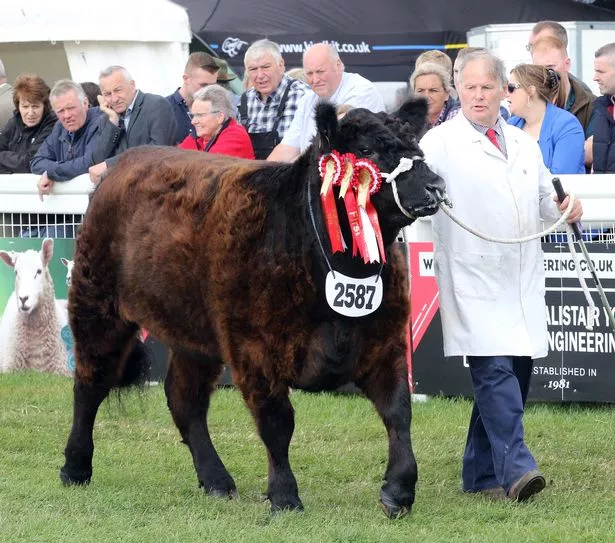
(Image: Bobby Geddes)
“We bought a herd of commercial cows over in the Borders then a fortnight later, on April 3, 2001, out of the blue we got a phone call from very good friends of ours, John and Shona Christie at Loch Dochart up at Crianlarich.
“John asked what we were doing and I said ‘are ye having a laugh?’
“But then he asked if we would like to go on the welfare scheme for folk that could not afford to feed their cattle or move their cattle.
“That involved you going with cattle floats and helping with all the paperwork at the farms affected.
“There were two or three lorries and I was a government employee doing that from April to June.
“Then John asked what I was doing about putting Galloway cattle back on Romesbeoch.
“I told him ‘not the way I feel at the moment, I have done a lot with the Galloways and I’m trying something else’.
“‘Shona and I have discussed it,’ he said, ‘and we would like to make the middle part of the herd available to you.
“‘You can have the pick of 32 cows.’
“I was overwhelmed that he made such a very generous offer and that he and Shona had thought about myself and the family after all that had happened.
“We had bought cattle off him before so we had that connection.
“There was a deal done and my son Doug and I went up to Loch Dochart and picked out 16 cows, aged eight to 12 years old, and all in calf.
“They all came to Romesbeoch at the beginning of December that year – and that was the start of the new Galloway herd at Romesbeoch.
“The following February we bought three heifers at Castle Douglas and a bull, then bought some blood lines off Blackcraig, Todstone and Doon of Urr – and that was us on our road again.”
It seems a near miraculous, almost Lazarus-like resurrection in the Romesbeoch Galloway cattle story, and one of which Jim is justifiably proud.
“Since then we expanded our ground area, rented more land and increased our numbers.
“We now have 20 Galloway cows, more sheep – Blackface and mule – and commercial cross suckler cows, Solaire, Limousin and Angus, to a Charolais bull.”
Jim first became a council member of the Galloway Cattle Society around 1980, he tells me, went on to become vice-chairman and, in 2002, chairman.
“I was chairman for the next nine years,” he says.
“The society is responsible for the promotion of the breed at different events.
“I was also chairman of the Blackface and Leicester sheep associations from 1994-5.”
Away from the farm, his daughter Lindsay’s talent as an athlete saw him get involved in another field – without a Galloway coo in sight.
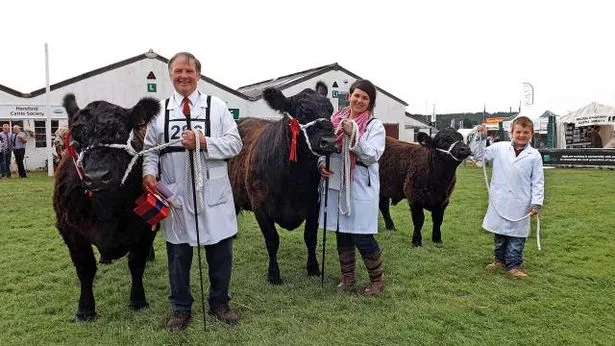
“Lindsay was into athletics and was a member of the Nith Valley Athletic Club,” Jim smiles.
“At that time Selina did the canteen for them at the David Keswick Athletics Centre in Dumfries.
“I would go and measure the distances for the shot putt and the javelin, and became chairman of the club as well.
“Lindsay would be 14 or 15 and I would take her in.
“They asked her how she got there and she said ‘my dad, he’s out waiting in the car’.
“‘Get him in here’ they told her, and that was me involved.”
Jim’s skills as an expert stockman, I learn, took him all over Scotland, to England, Germany and twice to Australia.
“One time at the Royal Adelaide Show I judged four different breeds of cattle, which was most enjoyable,” he says.
“The Belties, Galloways and Highlands were much the same as here but the Charolais were completely different – not as big and thicker set.
“It was a joy to be invited out there, really special.
“Also, Selina and I have attended a good number of Galloway congresses in Australia, then Austria, Germany and Scotland.
“I think the last time it was held here was 2016.”
Jim’s family are all involved with agriculture, he tells me, while his extends beyond the farm.
“Lindsay’s partner Stevie manages a farm outside Castle Douglas, Matt is self-employed and works on a farm neighbouring Romesbeoch, Doug is on the farm here and Carolyn and Dexter have their own wee place where they breed Highland and Galloway cattle, and Carolyn is also a rep for Davidson’s animal feeds.

“Two grandsons are working for local contractors and one is a junior stockman with a Limousin herd at Stirling.
“I have also worked 41 years at Wallets Mart as a yardsman, working with sheep and cattle on sale days.
“Stock numbers are a lot less than they used to be.
“From 28,000 sheep in two days to 8,000 in one – that’s how it’s gone.
“And in the 1960s you’d get 900 Galloways at the sales, but these days you’re lucky if you get 100.”
Without stalwarts such as Jim, one wonders what would happened to arguably Scotland’s most famous breed of cattle.
Either way, the irrepressible stockman is heading up to Turriff Show, more formally called the Royal Northern Show, to cast his eye over the Highland cattle.
“I’m absolutely delighted and honoured to be a judge,” he says.
“It’s quite a big show and there are a lot of Highland cattle folds up in that area.
“Mind you, I have only judged Highland cattle before in Australia!”



